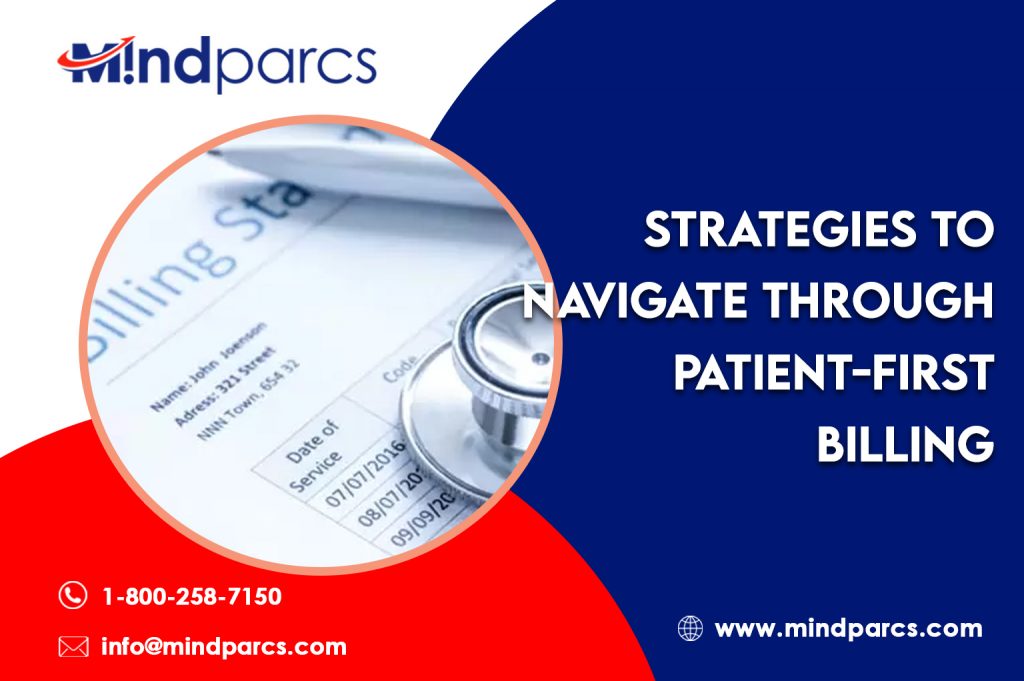
How to Overcome the Common Challenges in Podiatry Medical Billing
Overcome the Common Challenges in Podiatry Medical Billing Podiatrists have a crucial role in securing the mobility and overall health of individuals. However, their practices

New laws and regulations and insurance complexities make patient-first billing a challenge for hospitals. How HealthCare organizations are overcoming these obstacles through people and technology.
Patients are always first when it comes to healthcare. However, the patient-first concept is still a relatively new billing practice for provider organizations.
“Self-pay A/R is really shifting with high-deductible health plans,” explains director of patient revenue cycle at a Massachusetts-based health system. “Before people used to say, ‘It’s just self-pay.’ Now, we are really paying attention to self-pay.”
Patients are now financially owing more for their healthcare services than ever before. In addition to premium increases, employees are having to still cover bills after employer contributions. Patients are also having to pay higher deductibles, according to research from the Kaiser Family Foundation.
Average deductibles stood at nearly $1,670 for a single individual in 2021, this is the most current year for which researchers had complete data. In 2021, 85 percent of covered employees were subject to a deductible through their employer sponsored health plans.
There has been an influx of the growing share of workers with deductibles and the cost of those deductibles have increased the burden of deductibles by 92 percent across all covered employees, the Kaiser Family Foundation reported.
Beth Israel Lahey Health noticed this shift and has implemented patient-first billing strategies to increase self-pay collections while improving patient satisfaction.
Patients understand their medical bills, according to a 2020 survey. What’s even more interesting is that about half of patients responding to the survey also said they pay their medical bills late and many citing confusions as a reason why.
About 37 percent of patients indicated that they did not think they would be responsible for charges, while one in five said they did not know how much they owed. Other reasons included the billed amount was wrong, that they forgot to pay, and that they were unsure when the payment was due.
Patients are asking for a better way of understanding what they are responsible for. New federal laws and regulations are trying to give healthcare consumers just that.
Per CMS policy, hospitals must now disclose a list of all their charges, including gross and payer negotiated rates, as well as provide a consumer-friendly list of a couple hundred of its schedulable services. The No Surprises Act, went into effect this year, also sheds light on healthcare prices by requiring hospitals to provide good faith estimates, among other requirements.
“The No Surprises Act has been extremely challenging,” Rhodes says. “It's geared to patients, which we understand, but it really does not take into consideration a lot of the nuances or responsibility of an employer or the patient in choosing a health plan or the health plan in general. The burden is lined solely on the provider and it's been very resource heavy to comply. We've really been jumping through hoops.”
Hospital price transparency as defined by federal regulation is a major obstacle for providers.
“Some patients are still shocked when they get a bill because they may not have met their deductible yet or they have now met their deductible in one fell swoop.”
Rhodes is insistant that the responsibility should be on payers to deliver more transparency on patient out-of-pocket costs, especially since it is so difficult for patients to determine what they are responsible for.
“On top of the deductibles, coinsurances, copayments, then there is tiering, which adds a whole new level of complexity, as well as out-of-network coverage, which can spin a patient’s coinsurance in one way or the other,” Rhodes adds. “How do you help a patient navigate that though?”
Rhodes hopes federal and state laws will address this complexity of contracting so patients can get the pricing information they need to pay their medical bills. Until then, Beth Israel Lahey Health has made some changes to its patient billing processes to ensure that the patient comes first.
Despite challenges, Beth Israel Lahey Health has put several procedures in place to make patient-first billing a reality.
Education plays a major role of the patient-first billing strategy at the health system, explains Rhodes.
“It’s really about educating people and putting staff in the clinics who understand EOBs and benefits and can explain those to patients,” Rhodes says. “They try to do a better job educating while performing a more immediate job in financial clearance.”
The patient revenue cycle team has worked with patients about their costs and the network for the No Surprises Act. Staff is providing patients with consent forms and good faith estimates as required by law and make sure to notify patients through the patient portal.
“At the point of scheduling in our system, as soon as an individual selects a plan and a location, they are prompted with certain messages, such as whether they are within their plan’s network,” Rhodes elaborates.
The issue is still that the patient does not know their financial responsibility at the point of scheduling.
“We are doing our best to resource screenings and estimates pre-service, but it’s a real shift in thought and isn’t an exact science because we don’t always know the exact charges until it posts from us,” Rhodes says.
Although Beth Israel Lahey Health’s patient revenue cycle team is doing its best to fill price transparency gaps through patient education, they are also leveraging technology to make payment easier for patients.
“Using Access One, we send out secure mobile links to patient statements,” Rhodes states. “The patient can then pay on their phone using one-click payment and whatever payment method on their phone. We layer that on top of existing processes, such as opting everyone into paperless billing.”
A paperless billing process cuts down on the amount of manual work in the revenue cycle however, there is a safety net for patients who do not respond to electronic communications. Patients who don’t open the text with the secure link to their statements or they do not open the statement through the patient portal within 30 days, will receive a paper bill.
Rhodes points out that the health system has had great success with text-based billing since the start of the pandemic.
“People are getting more used to this technology,” Rhodes explains. “We saw success with our post-service payments, so we’ve started to use text messaging for estimates and other quotes. We have the portal so patients can also log in, we push out a custom estimate and the patient can pre-pay on their phone.”
This process has led to a 10 percent increase in self-pay collections. Rhodes attributes the success to ease of use.
“There’s no way to pay a bill without having a number, which is cumbersome,” Rhodes explains. “You might get an email, click on it, and be prompted to input your username and password. However, you forget your credentials, so you stop the payment process right there. Or perhaps you need the account number from the bill or guarantor number.”
“With our text messages, the secure link only asks you to confirm your date of birth. Once you do that, you can pay for the bill on the web. We get to make it easier for patients to pay us.”
The convenient payment methods are part of the health system’s plan to create a more Amazon-like experience for patients.
“People use Amazon because everything is saved, it’s easy, it’s clear,” Rhodes states. “You click one button and the transaction is complete. Wouldn’t it be nice if healthcare was like that? It doesn’t solve the complexity of contracts, but it helps with patient experience.”
Smaller payment options similar to retail payments maybe be an option such as allowing patients to pay in 3 or 4 installments.
The rise of self-pay is pushing providers to modernize the patient experience through technology and process. Leaders may never have thought ten years ago that they would be in the business of online payments and payment plans for healthcare services. It certainly has its challenges but it is all part of a larger cultural shift.
“Healthcare has always been behind in the technology space, especially in the patient financial experience realm,” Rhodes states. “It was unheard of to use payment methods like Google Pay or Apply Pay, but now people are realizing that you have to treat it more like a business and patients are demanding this kind of functionality. There is a culture shift shoving us in that direction, and we’re really about to get some more patient satisfaction out of it.”

Overcome the Common Challenges in Podiatry Medical Billing Podiatrists have a crucial role in securing the mobility and overall health of individuals. However, their practices

Urgent Care Medical Billing Mistakes & Solutions to Resolve In healthcare industry, urgent care specialties play an important role in offering efficient medical services. However,
